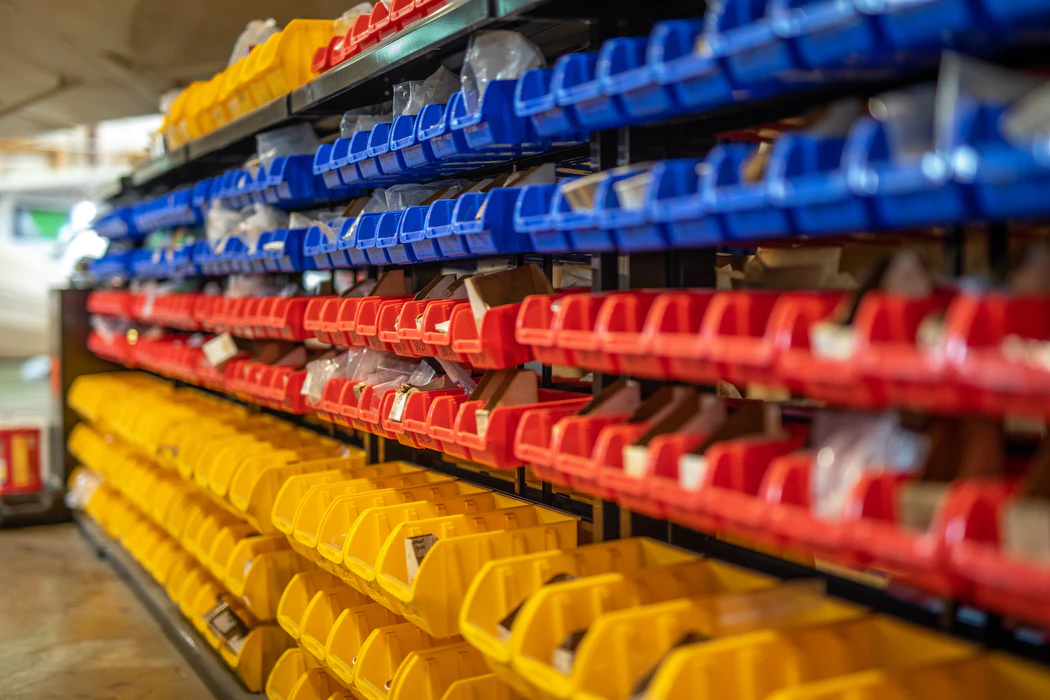4 Proven And Effective Dropshipping Methods
What comes to mind when you hear the word “dropshipping?” More than likely, you’re picturing Chinese manufacturers, international shipping, and AliExpress.
While international dropshipping is the go-to these days, there are actually 4 ways to do dropshipping. If you’re going the international route, that’s great. You don’t have to order generic products from overseas if that’s not your thing. However you operate today, it’s still valuable to know other avenues for putting products in your customers’ hands.
Typically, entrepreneurs fall into 4 dropshipping categories. Broaden your dropshipping horizons by understanding the nuance and variety in our industry—you never know where a little knowledge will take you.
1 - Retail arbitrage
Retail arbitrage gained steam with the popularity of platforms like eBay and Amazon. Here’s how it works:
- An entrepreneur finds shoes selling on eBay for $65.
- She buys as many of these shoes as she can for $65.
- She turns around and resells those shoes for $100 on Amazon, making a $45 return.
Retail arbitrage happens when you find products selling for a cheaper price in one geographic area or store, and then resell it at a higher price. It’s really common for entrepreneurs to buy all the stock from TJ Maxx, Marshall’s, or outlet stores and resell them online.
This isn’t super-efficient on its own, but with the Amazon app, you can scan barcodes in retail shops to quickly see if the item is selling for more on Amazon.
For example, if you go to the Nike outlet and scan every SKU there, you can see if those shoes sell for more on Amazon. If the margins are healthy enough, you buy everything on the shelf and resell it.
Some entrepreneurs have become so great at retail arbitrage that they have teams across the US, and even the globe, sourcing products. It’s a grind, for sure, but you can make fast money with this dropshipping method.

Benefits
I love retail arbitrage because there are no barriers to entry; anyone can get started on this and it’s super easy. Retail arbitrage is also great because you can flip items very quickly, making your money back within just a few days.
Downsides
Retail arbitrage is a great make-sales-quick scheme, but it has some serious downsides.
First of all, I’m pretty sure it’s against Amazon’s terms of service to do retail arbitrage on the platform. If Amazon gets wind of your activities, it could ban you.
There are also some weird tax implications with retail arbitrage, too. You’re buying a product at retail, paying retail tax, and then reselling it. I’m no accountant, but you could hit some potential issues with this once you start making real money. Get a good accountant on retainer if you want to do retail arbitrage at scale
But aside from the official rules and legal issues, retail arbitrage isn’t a great long-term strategy. You’re running on a hamster wheel of stocking, selling, and shopping. And who knows what products you’ll sell on a weekly basis?
Even if you have a best-selling product, it’s nearly impossible to keep it stocked. You have no way of reliably sourcing a consistent product with retail arbitrage. The lack of consistency means it’ really hard to build a brand.

One week, you could sell shoes, and the next, you’re selling waffle irons. In reality, retail arbitrage isn’t building an actual sales channel for you: it’s just trading at high speed.
Can you make money with retail arbitrage? Absolutely. But it’s a hustle and a constant grind, so if you want to live on Easy Street, it may be time to try a different dropshipping method that actually scales.
2 - International dropshipping
International dropshipping is one of the most popular forms of dropshipping. It’s gained a lot of popularity thanks to platforms like AliExpress. Here’s how it typically works:
- An entrepreneur uses AliExpress or a similar platform to order products from an international manufacturer.
- The manufacturer sends the goods from their factory to your country.
- Depending on your terms with the manufacturer, they can send items to a warehouse, 3PL, or fulfill orders directly from their location.
Whether you visit China in person or manage everything from your office in the States, international sourcing can be a cost-effective and easy way to start dropshipping.
Benefits
Entrepreneurs love overseas manufacturing for one big reason: it’s cheap. You can get much more favorable pricing terms when you work with an international manufacturer.

Plus, international dropshipping gives you a wider product selection. Search for different products on platforms like AliExpress to give customers a selection of SKUs.
Entrepreneurs often start with international dropshipping because it has fewer barriers to entry. You don’t even need a real business account—nearly anyone can get started, as long as you can afford the merchandise.
Downsides
International dropshipping isn’t perfect, though. It’s important to remember that you’re manufacturing goods across the globe. You can’t wave a magic wand and have your products appear overnight. Shipping will always take longer with international dropshipping.
Quality control is also a concern. AliExpress might change your manufacturer several times. You might have someone great right now, but just one change can hurt your product quality. Unless you’re on the factory floor, you can’t be sure that the manufacturer will produce quality work.
3 - Domestic dropshipping
I often see brick and mortar businesses looking at domestic dropshipping the most. While most people go to international dropshipping first, domestic is a valid option, too.
With domestic dropshipping, you work with manufacturers based in your own country. Domestic eliminates a lot of the headaches that come with international sourcing, but might not work for every entrepreneur.
Benefits
It’s simple geography: a domestic supplier will ship products faster than an international one. Ship in 1 - 3 days for happier customers and fewer headaches with customs.

Entrepreneurs also like domestic dropshipping because:
- They can get credit terms: If you’re close with your domestic supplier, sometimes they’ll agree to 30 - 60-day payment terms. If you’re just starting out, that can help you control cash flow.
- Quality control is better: In this model, you have one manufacturer and one distributor. Both do QC at their level, checking for defects. This means you have a middleman, but they’re someone you can trust, and that means more product consistency.
- They give you access to complementary items in your niche: Tap your domestic supplier to sell other high-quality items your customers would enjoy. They often have a whole catalog that allows you to expand your SKUs.
Downsides
Domestic dropshipping sounds pretty great, right?
The reason people don’t use domestic dropshipping first is because of the cost. In the US, it’s more expensive to store and manufacture goods than it is overseas.
Plus, domestic dropshipping comes with a middleman for QC. That’s great for customer satisfaction, but not-so-great for your budget.
Domestic suppliers are also more choosy. You’ll have to qualify for each distributor’s Approved Dealer status before you sell anything.
4 - Hybrid dropshipping
Once upon a time, you had to choose between either international or domestic. Fortunately, entrepreneurs can combine both approaches in hybrid dropshipping.
A hybrid model allows you to stock your own products and sell products directly from external vendors.
For example, you might stock your top 10 SKUs locally in a warehouse or use a 3PL. But you could also sell 10,000 other SKUs on your site through international distributors. When orders come in, you just split them at your warehouse. You might sell basketballs locally, but sell basketball hoops from your manufacturer.

Hybrid dropshipping means you have layers of inventory. Entrepreneurs often sell their own inventory locally. When a SKU is out of stock locally, they place an order with an outside distributor. The result is that hybrid businesses stay in stock more than their competitors.
Large retailers almost always take a hybrid approach because they want consistency. But even as a small business, you can make hybrid dropshipping work for you.
Benefits
Hybrid dropshipping is growing in popularity. Entrepreneurs use this model because:
- It’s easier to control: Focus on your high-margin or best-selling products locally, tapping distributors for certain items you know they can make well.
- You stay in stock: Hybrid dropshipping gives you access to multiple distributors. If you go out of stock, there’s a good chance a distributor can keep your shelves stocked.
- Shipping is faster: Use domestic shipping to put products in customers’ hands faster, using international suppliers when it makes the most financial sense. You don’t have to pay as many shipping fees with hybrid dropshipping, either.
- You can buy in bulk: Bulk pricing can shave costs off your margins. The hybrid approach gives you the freedom to buy your best items in bulk to boost your bottom line.
In short, hybrid dropshipping is great because you get the benefits of both stocking and warehousing your products.
Downsides
Hybrid dropshipping definitely gives you the best of both worlds. However, the downside to this approach is that you can’t do it manually.
Your warehouse, distributors, and other parties have to work together in real-time. That’s incredibly complicated, and it’s not something that Shopify can do out of the box.
You need technology to make hybrid dropshipping profitable. Spark Shipping is one of the few tools designed specifically for hybrid dropshipping. The system pulls data feeds and uses real-time manipulation to help you stay in stock and keep costs low—without losing your mind.
The bottom line
Dropshipping comes in different flavors. Whether you want to do retail arbitrage, international dropshipping, domestic dropshipping, or a hybrid model, go for it. Remember that there are different variations of dropshipping available, so don’t think you have to stay married to your current processes. Try something new—you never know where it will take you.
Popular Posts
Posts by Topic
- Dropshipping (10)
- Dropshipping Automation (6)
- Dropship Suppliers (4)
- EDI (3)
- Pricing Strategy (3)
- Amazon Seller Central (2)
- Automotive Dropshipping (2)
- Conversion Rate Optimization (2)
- Dropshipping Products (2)
- Order Management (2)
- Shipping (2)
- Vendor Product Catalog (2)
- AI Dropshipping (1)
- Dean Soto (1)
- Feature Announcement (1)
- Online Empire Academy (1)
- Product Optimization (1)
- Walmart Marketplace (1)
- referral marketing (1)